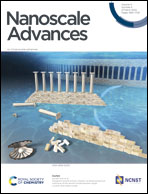Predicting the photon energy of quasi-2D lead halide perovskites from the precursor composition through machine learning†
Abstract
Quasi-2D perovskites with the general formula of L2An−1PbnX3n+1 (L = organic spacer cation, A = small organic cation or inorganic cation, X = halide ion, and n ≤ 5) are an emerging kind of luminescent material. Their emission color can be easily tuned by their composition and n value. Accurate prediction of the photon energy before experiments is essential but unpractical based on present studies. Herein, we use machine learning (ML) to explore the quantitative relationship between the photon energies of quasi-2D perovskite materials and their precursor compositions. The random forest (RF) model presents high accuracy in prediction with a root mean square error (RMSE) of ∼0.05 eV on a test set. By feature importance analysis, the composition of the A-site cation is found to be a critical factor affecting the photon energy. Moreover, it is also found that the phase impurity greatly lowers the photon energy and needs to be minimized. Furthermore, the RF model predicts the compositions of quasi-2D perovskites with high photon energies for blue emission. These results highlight the advantage of machine learning in predicting the properties of quasi-2D perovskites before experiments and also providing color tuning directions for experiments.



 Please wait while we load your content...
Please wait while we load your content...